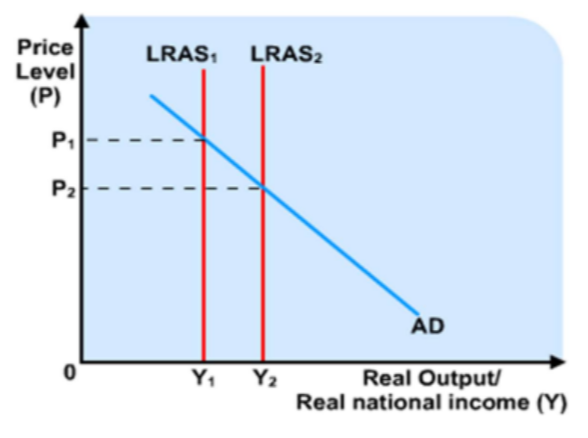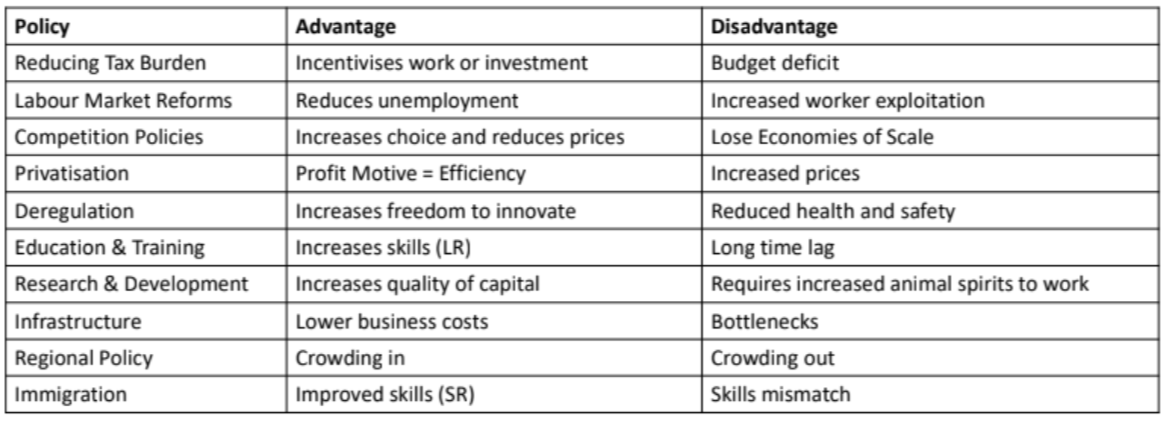4c. Supply side policy
Supply side policy
Supply-side policies are actions by government to increase the productive potential of the economy (i.e. pushing out LRAS) They can be either market based (allowing markets to work more freely) or interventionist methods (the government intervenes to stimulate aggregate supply)

Other possible supply side policies
Reforming (in particularly weakening) trade unions
Make labour markets more flexible. For example introduce new employment contracts such as zero hours
Reduce workers rights
A stricter benefits regime
Tax reform to encourage people to work
Improving education and training
Improving transport and infrastructure
Changing the minimum wage (up or down)
Incentivising business to increase production
Giving better information about job opportunities
Supply side policy
• Supply-side policies are mainly policies designed to make markets and industries operate more efficiently and contribute to a faster underlying-rate of growth of real national output • Successful policies have the effect of shifting the LRAS curve to the right leading to a rise in potential output • Policies aim to influence productivity and efficiency of the economy • Most governments believe that improved supply-side performance is the key to achieving sustained growth without causing a rise in inflation. • Supply-side reform on its own is not enough to achieve this growth. There must also be a high enough level of AD so that the productive capacity of an economy is actually brought into play.
Supply side policy

Supply side policy using classical LRAS

Supply side policy using Keynesian LRAS

Supply side policy
